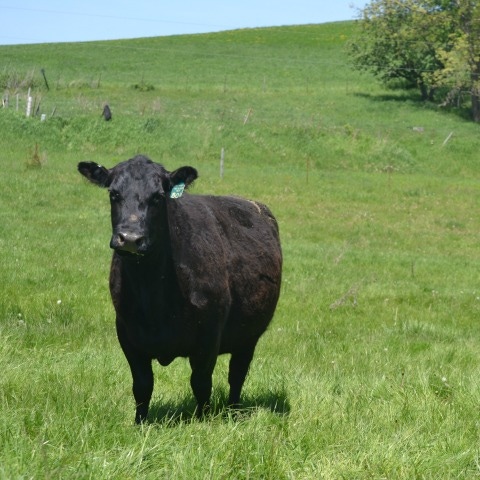Rule out nutritional culprits, and plan for above-average breeding results next round.
October 1, 2018

If cow/calf producers think they’re doing everything possible to prepare for a great pregnancy check but are getting below-average results, it’s time to pinpoint the reason.
“Lots of things could contribute to disappointing pregnancy check results,” said Dr. Doug Hawkins, technical support specialist for Purina Animal Nutrition. “Is it nutrition? Health? The bull? Identifying the culprit starts with the process of elimination.”
Many factors contribute to breeding success, but a herd’s nutrition is the easiest to manage, Purina Animal Nutrition said.
“Start thinking about preg checking a year in advance,” Hawkins suggested. “Once you preg check, there’s not much you can do to impact results. It has to be a year-round focus.”
The recruitment of oocytes on the surface of the ovary occurs three to four months before a cow ovulates, so the impact nutrition has on fertility and conception is critical even before the bull is turned out with the cow herd.
Breeding success or failure can also be compounded by a cow’s energy requirements.
“Most of the time, cows are lactating, have a calf at side and are trying to meet their own nutritional requirements,” Hawkins said. “The bottom line is cow nutrition requirements are high at the time of breeding, and cows need adequate nutrition to get pregnant.”
Ruling out nutritional culprits
“If nutrition is not up to par, you’ll likely see less-than-desirable results on preg check day,” Hawkins said. “Then, it’s time to start evaluating.”
Some common questions to ask include:
* Did cows have sufficient forage before and during the breeding period?
* Were cows consuming mineral and protein supplements at target intake levels?
* Did the supplement(s) have enough energy to meet cow requirements?
If the answer to any of these questions is "no," Hawkins said that may be the culprit. However, if each answer was "yes," the producer will need to dive deeper into nutrition and other management areas.
Ensuring that cows have what they need year-round is the key to breeding success.
“First, look at your forage situation,” Hawkins said. “Whether your forage is a round bale of hay or you have cows grazing, make sure you have forage to meet a cow’s roughage needs.”
Next, consider a cow’s energy and protein needs.
“Meet energy and protein requirements by using a self-fed supplementation program,” Hawkins added. “These programs allow cows to consume the energy and protein they need when they need it.”
If cows need more energy or protein, they’ll consume more supplement. If they are getting adequate energy and protein from forages, they’ll eat less supplement.
“Last, but not least, you need to provide a quality mineral,” Hawkins said. “Make sure cows are receiving the vitamins and minerals they need for breeding success.”
Hawkins recommended having “a written plan in place to achieve a 90-95% pregnancy rate. For the nutrition part of the breeding equation, cover energy, protein and mineral requirements -- and don’t forget to plan other parts of the equation, like animal health.”
You May Also Like


.png?width=300&auto=webp&quality=80&disable=upscale)
